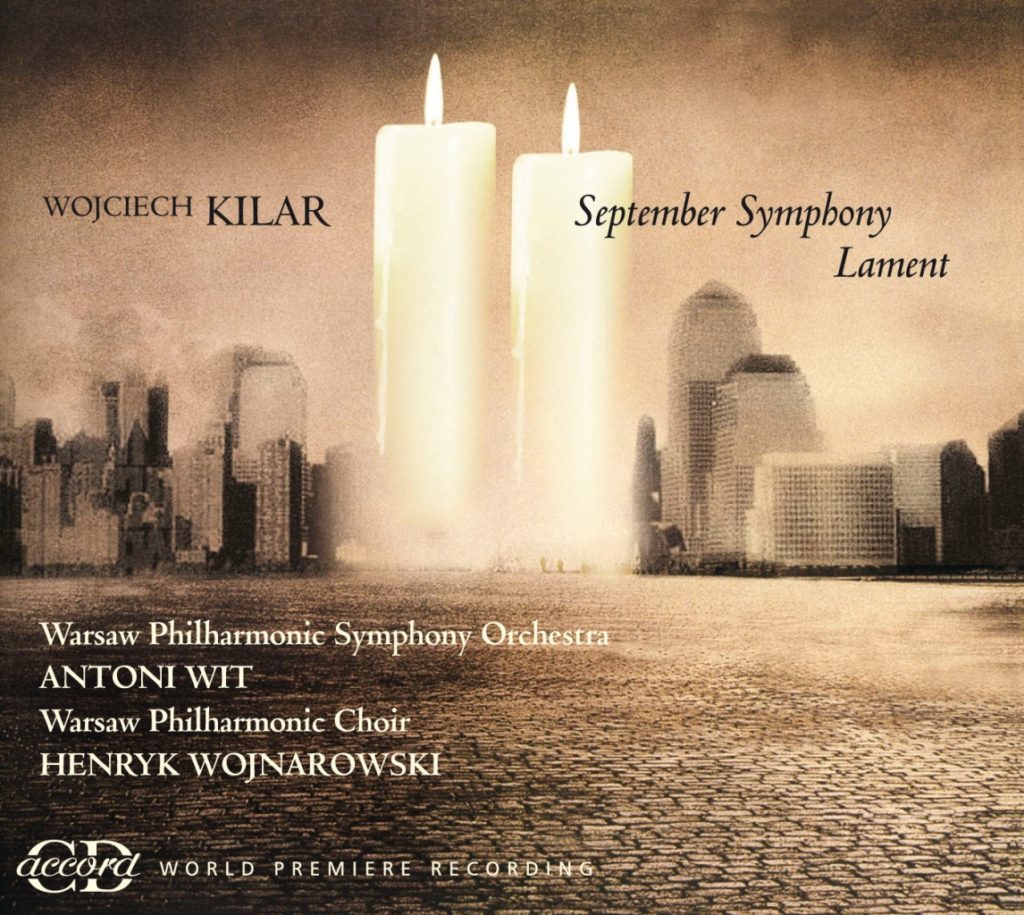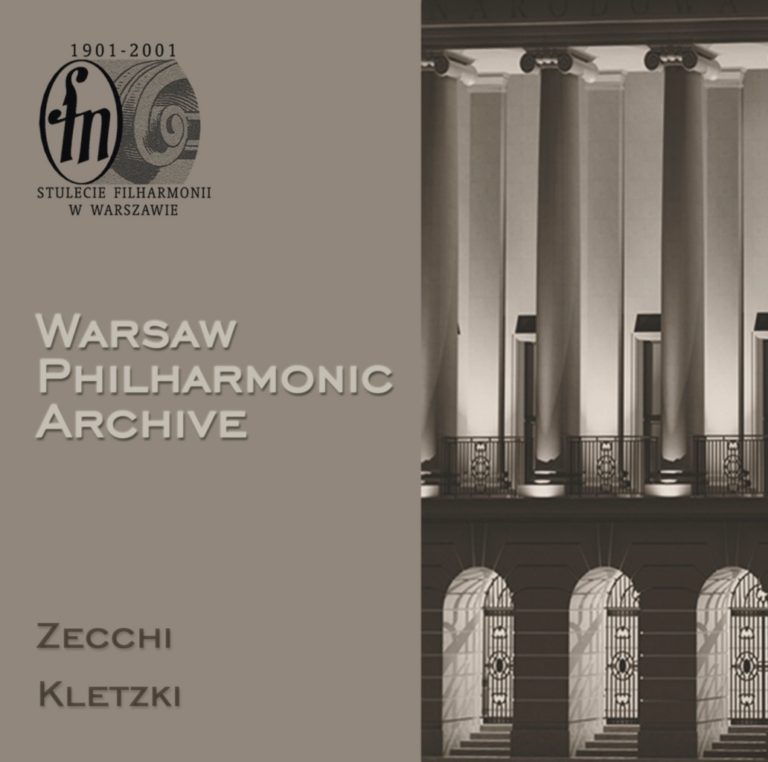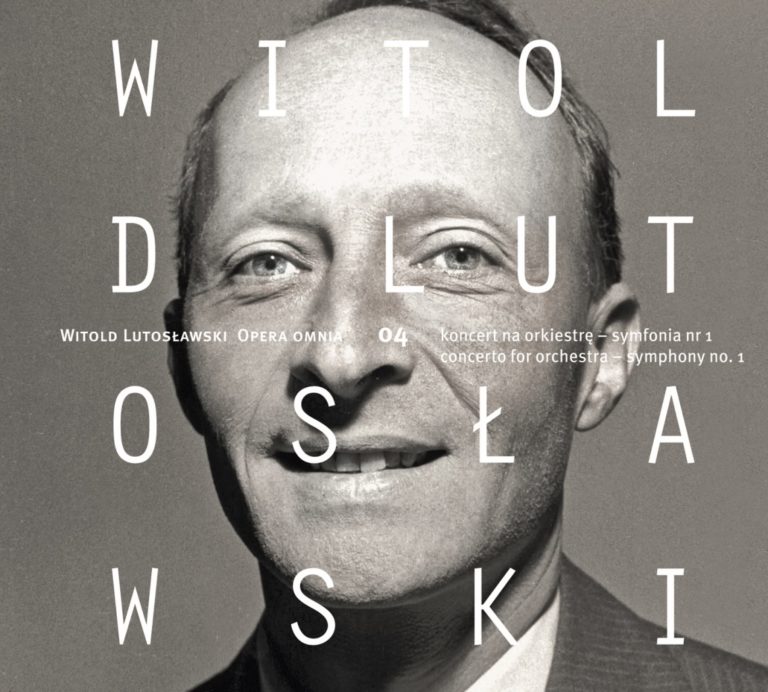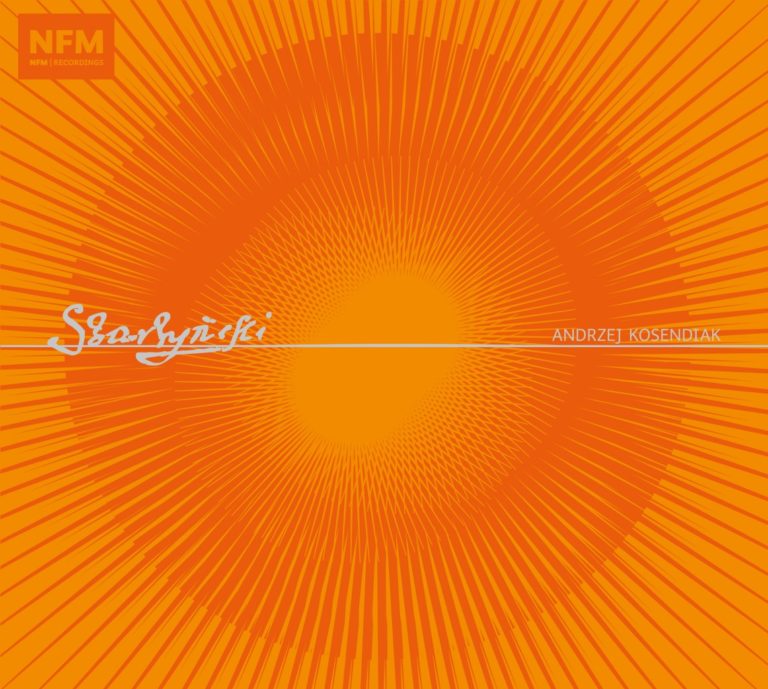
Lament September Symphony
Warsaw National Philharmonic Orchestra and Choir
Henryk Wojnarowski – conductor
Antoni Wit – conductor
RELEASE DATE: 2003
CATALOGUE NO. ACD 130
GENRE: symphonic music, choral music / vocal ensemble
[…] September Symphony is absolutely free from any pomposity. It is written in the well-known style. It does not claim to surpass Kilars previous works. Yet, it seems to mark an important point in his artistic career.
Those who are familiar with Kilars music will recognize the characteristic consonances, ostinato repetitions and stationary chords with their seductive harmonies and the tonic underlined with the bass beats of the piano. Kilar is a master at managing time. The repetitions are always just right in number; each climax consists of different layers and they each have their own distinct hues, so the limited harmonic variety is compensated for by the constant change of colours. The first movement is a kind of introduction to the second, more motoric one. Its aim is to get the listener to concentrate; the slow ostinato repetitions are meant to make one more sensitive to any musical gestures.
The third movement has raised a great deal of controversy among the audience. Its harmonic and melodic structures sound somewhat clichéd, which has even raised accusations of a Hollywood style. I read those lyrical melodies on the fringe of kitsch as a reference to that characteristic American variety of neo-classicism (represented by Barber, Schuman and Foss). Such an analogy seems quite legitimate; after all the motive from the patriotic song America, the Beautiful is repeated throughout the Symphony. What sounds best in the slow movement is its middle part where the above-mentioned melodies are clothed in a darker harmonic attire.
Adam Suprynowicz, Ruch Muzyczny, October 19, 2003
Reviews:
MusicWeb
WOJCIECH KILAR (1932-2013)
1. Lament for choir a cappella (2003) 14:25
September Symphony (2003)
2. Largo 13:14
3. Allegro 5:25
4. Largo 12:53
5. Moderato 8:47
Total time: 54:45



